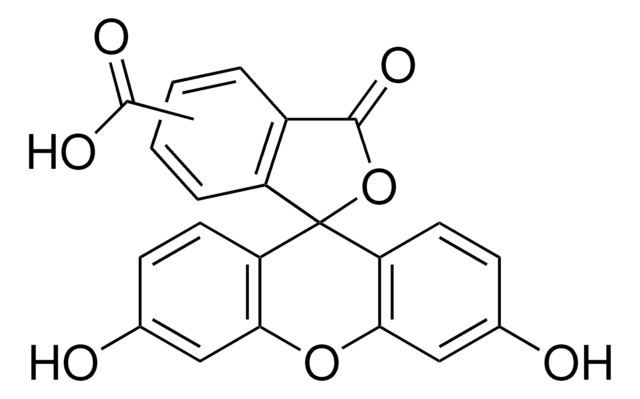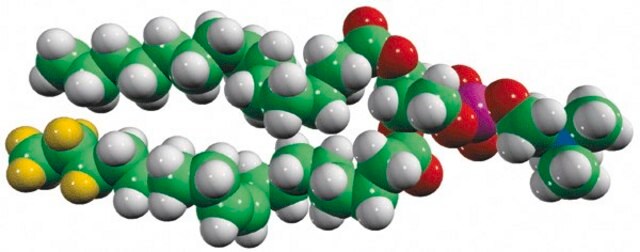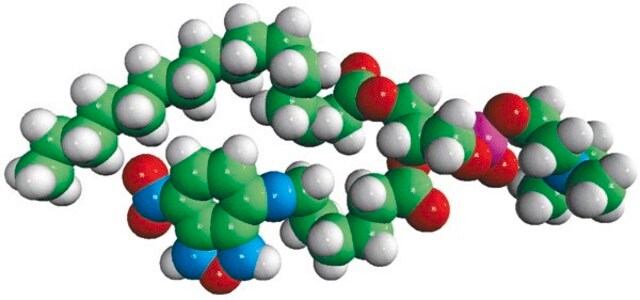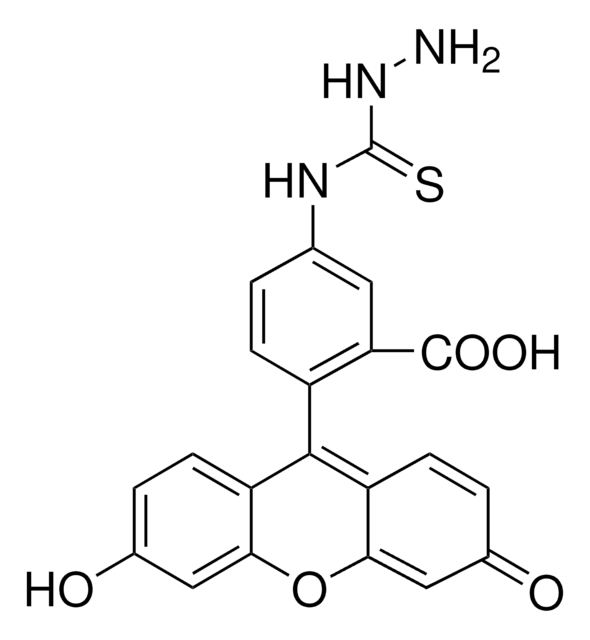857228P
Avanti
C18 LPA
1-O-octadecyl-2-hydroxy-sn-glycero-3-phosphate (ammonium salt), powder
Sinônimo(s):
1-octadecyl-sn-glycero-3-phosphate (ammonium salt); PA(18:0e/0:0)
About This Item
Produtos recomendados
Ensaio
>99% (LPA; may contain up to 10% of the 2-LPA isomer)
Formulário
powder
embalagem
pkg of 1 × 1 mg (857228P-1mg)
fabricante/nome comercial
Avanti Research™ - A Croda Brand 857228P
tipo de lipídio
phospholipids
cardiolipins
Condições de expedição
dry ice
temperatura de armazenamento
−20°C
cadeia de caracteres SMILES
O[C@](COP([O-])(O)=O)([H])COCCCCCCCCCCCCCCCCCC.[NH4+]
Descrição geral
Aplicação
- to study its effects on Yes-associated protein (YAP) phosphorylation
- as a standard for the quantification of lysophosphatidic acid (LPA) compounds in proton samples using reversed-phase ultra-performance liquid chromatography-tandem mass spectrometer (UPLC-MS/MS)
- as a substrate to investigate the phosphatase activity of soluble epoxide hydrolase (sEH) towards LPA compounds
Ações bioquímicas/fisiológicas
Embalagem
Informações legais
Código de classe de armazenamento
11 - Combustible Solids
Classe de risco de água (WGK)
WGK 3
Escolha uma das versões mais recentes:
Certificados de análise (COA)
Lamentamos, não temos COA para este produto disponíveis online no momento.
Se precisar de ajuda, entre em contato Atendimento ao cliente
Já possui este produto?
Encontre a documentação dos produtos que você adquiriu recentemente na biblioteca de documentos.
Nossa equipe de cientistas tem experiência em todas as áreas de pesquisa, incluindo Life Sciences, ciência de materiais, síntese química, cromatografia, química analítica e muitas outras.
Entre em contato com a assistência técnica








